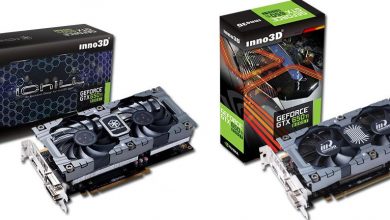How to Choose a Load Balancer: 5 Tips for Picking the Best Load Balancer

In the world of modern technology and online services, ensuring seamless performance, high availability, and efficient distribution of incoming traffic is essential. This is where load balancers come into play. A load balancer acts as a traffic manager, distributing incoming requests across multiple servers to prevent overload and optimize resource utilization. Choosing the right load balancer is a critical decision that can significantly impact your application’s performance, reliability, and user experience. In this article, we’ll explore five essential tips to help you pick the best load balancer for your needs.

1. Define Your Requirements and Goals
Before delving into the specifics of load balancers, it’s crucial to define your requirements and goals. Consider factors such as:
– Traffic Volume: How much incoming traffic do you expect? Is it consistent or subject to spikes?
– Application Architecture: Do you have multiple servers or data centers? Are you running a cloud-based application?
– Performance: Are low latency and high throughput critical for your application?
– Scalability: Will your application need to scale horizontally to accommodate increasing traffic?
Understanding your requirements will guide your decision-making process and help you choose a load balancer that aligns with your needs.
2. Types of Load Balancers
There are different types of load balancers, each catering to specific requirements:
– Hardware Load Balancers: These are physical appliances designed for high-performance applications. They often come with features such as SSL termination and advanced traffic management. However, they can be expensive and might require more maintenance.
– Software Load Balancers: These are software-based solutions that can run on commodity hardware or virtual machines. They offer flexibility and cost-effectiveness. Examples include NGINX, HAProxy, and Microsoft Application Request Routing (ARR).
– Cloud Load Balancers: Cloud providers offer load balancing services tailored for their environments. Examples include Amazon Elastic Load Balancing (ELB) and Google Cloud Load Balancing.
– Application Load Balancers: These load balancers operate at the application layer, making decisions based on application-specific data. They are often used for routing based on URLs, cookies, or other application-specific factors.
– Network Load Balancers: These operate at the transport layer (Layer 4) and focus on distributing traffic based on IP protocols and port numbers.
Choose a type that best suits your application’s architecture, scalability needs, and budget.
3. Consider Performance and Scalability
Performance and scalability are critical factors in load balancer selection. A load balancer should be able to handle your application’s current traffic load and scale seamlessly as your user base grows. Look for load balancers that offer features like content caching, connection pooling, and load distribution algorithms to optimize performance. Additionally, consider load balancers that offer auto-scaling features, allowing you to add more instances as needed during traffic spikes.

4. Security and Encryption
Security is paramount in today’s digital landscape. Ensure that the load balancer you choose offers robust security features. Look for SSL termination capabilities, which allow the load balancer to handle SSL encryption and decryption, offloading this task from your backend servers. This enhances performance while maintaining security. Additionally, some load balancers provide features like Web Application Firewall (WAF) and Distributed Denial of Service (DDoS) protection, helping safeguard your application against malicious attacks.
5. Ease of Management and Monitoring
The ease of management and monitoring is essential for maintaining and troubleshooting your load balancer effectively. Consider load balancers that provide a user-friendly interface for configuration and monitoring. Look for features like real-time analytics, health checks, and logging capabilities. Furthermore, consider load balancers that integrate well with your existing infrastructure and tools. Cloud load balancers often offer integration with other cloud services, while software load balancers might have compatibility with popular deployment and automation tools.
Choosing the right load balancer is a crucial step in ensuring the performance, reliability, and scalability of your application. By defining your requirements, understanding the types of load balancers available, considering performance and scalability, prioritizing security, and evaluating management and monitoring features, you can make an informed decision that aligns with your application’s needs. Whether you opt for a hardware load balancer, a software solution, or a cloud-based service, remember that the load balancer plays a pivotal role in distributing traffic efficiently and enhancing the overall user experience. Take the time to research, test, and implement the load balancer that best suits your application’s architecture and growth trajectory.



